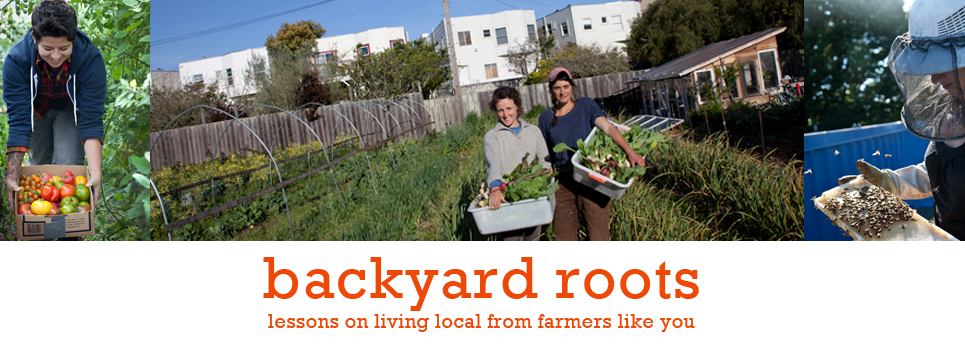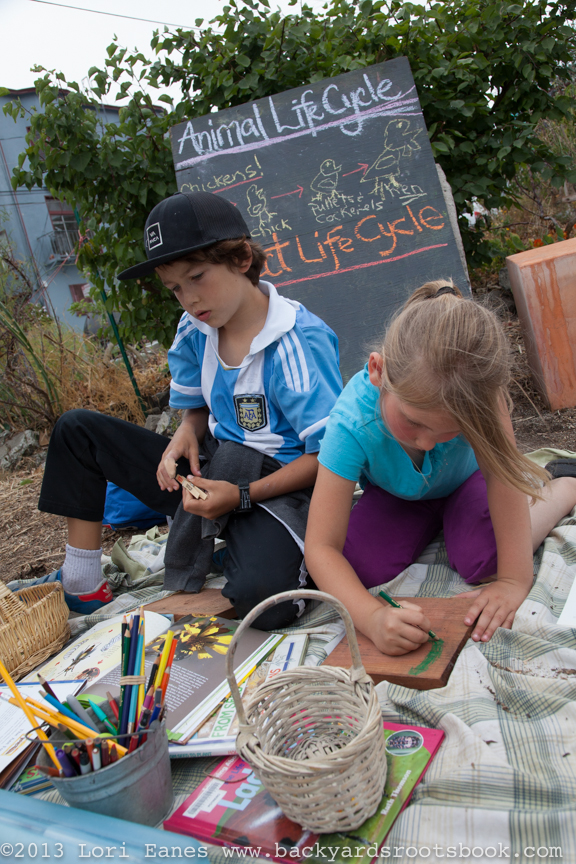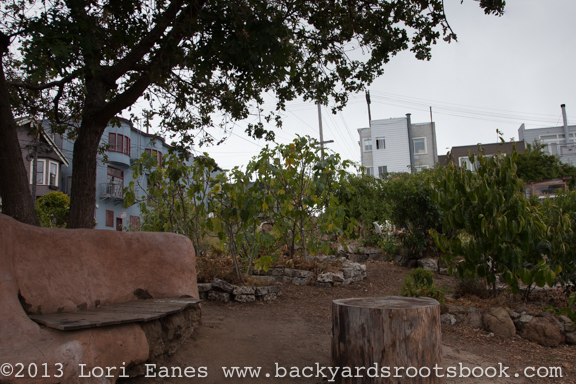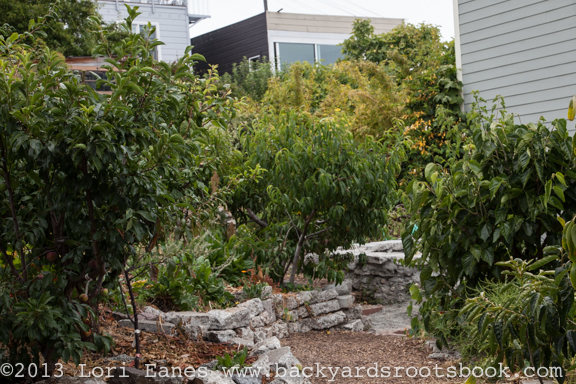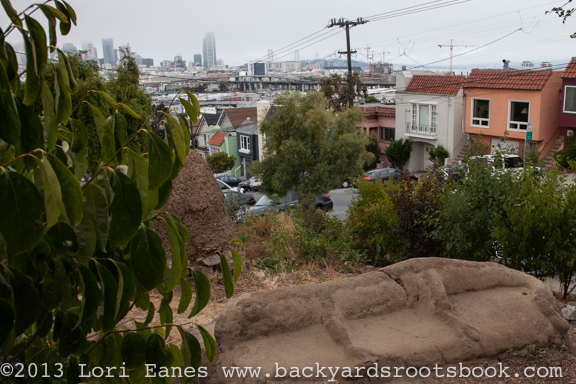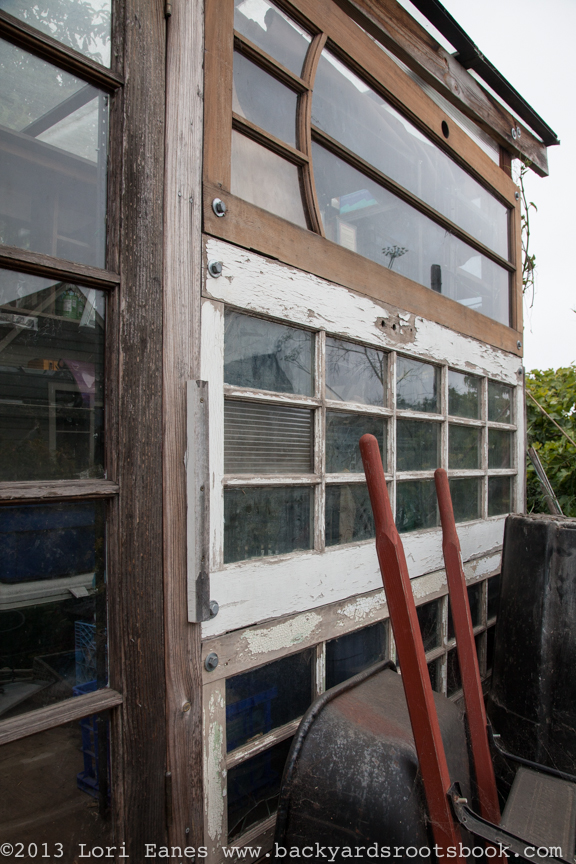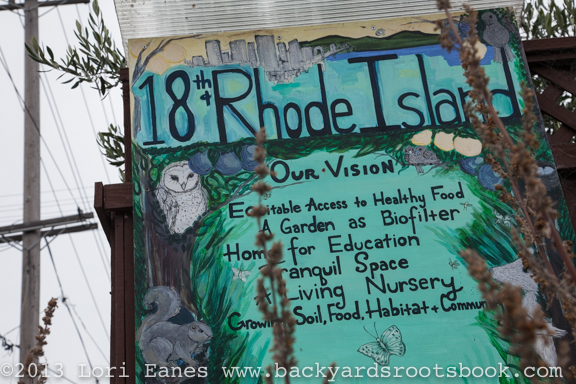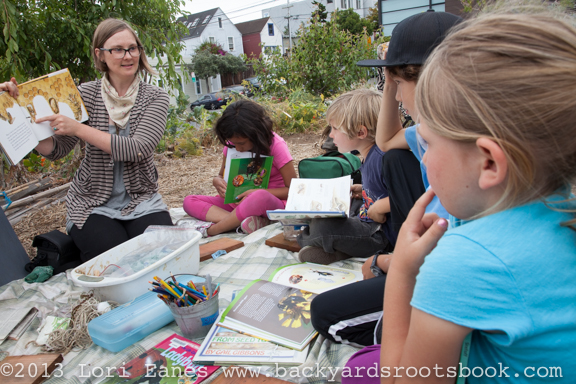
Dominique Piccinino teaches kids about bugs at the 18th and Rhode Island Street Permaculture Garden.
I recently read in SF Gate that San Francisco has just taken the first step into giving landowners a tax incentive to letting their empty lots be used for agricultural and educational purposes. The bill still has to be approved by the Board of Supervisors but is expected to pass as early as mid-July. Only empty lots would be eligible and properties would have to remain undeveloped for a minimum of five years. The hope is the bill would be to prevent urban blight and increase green spaces. Lots could even be used for bees and livestock– think of the farming possibilities!
To see what can be done with an empty lot, I visited an amazing permaculture garden at 18th and Rhode Island Streets on Potrero Hill. It got its start back in 2008 when the owner, Aaron Roland, read a story in the SF Chronicle about using vacant lots to grow food. The writer wrote about Kevin Bayuk who had found over a thousand vacant lots even in the dense city of San Francisco. His idea was to try to find owners willing to let their land be used for urban agriculture. When Aaron read the story he contacted Kevin and offered the space to be grown for food.
Since then, the sloping property has become a community garden developed with the principles of permaculture with help by project developer David Cody, permaculture students and the community. A good history of the project can be read in The Potrero View. The design works with nature but faster: building up the soil and catching and retaining rainwater in swales. The lot doesn’t look like your typical vegetable garden with rows of vegetables in square beds. Instead paths follow the contours of the hill with recycled concrete retaining walls The plots are planted heavily with fruit trees and many perennial vegetables that require less water. I noticed dwarf varieties of fig trees, apple trees, plums, pears and more. The front of the garden has cob benches that overlook downtown San Francisco and the far end of the property has a greenhouse/shed made of recycled doors. The newest addition is a pond and fish.
The garden is open to anyone and the day I visited, Branch, an educational program for kids was having a summer camp there. Kids were learning about bugs, picking fruit and making sun tea. It’s a great way to get kids into nature and there’s still two weeks left of summer camp with Branch and spots are available. Look here for more info.
It goes to show you there’s plenty of potential in an empty lot. Visit the garden and find out how to get involved on their Facebook page.
